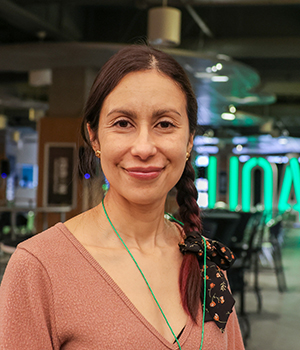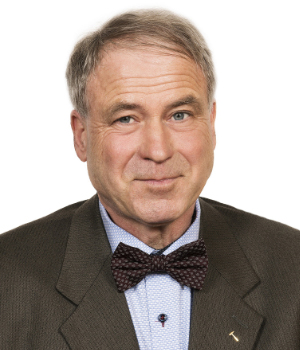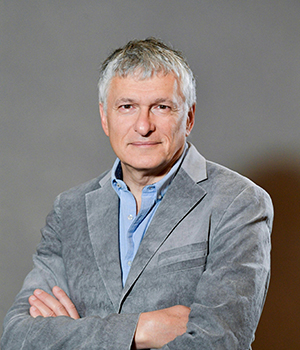Quebec is regularly ranked as one of the world’s leading mineral exploration jurisdictions. This is the fruit of an ecosystem that brings together public and private players, explorers, producers, consultants, educators and researchers… This session will highlight some of the milestones in our history, with a view to mapping out our future.
Quebec Mining Indsutry’s Hits and Challenges — Or How Quebec Became One of the World’s Leading Mining Exploration Regions
Tuesday, November 19, 2024
Room 301B - COREM



The distribution of mineral resources around the world is uneven, due not only to geological constraints, but also to the historical development of industrial empires. Global history thus recognizes a core, a semi-periphery and peripheries in each continental empire. In the semi-periphery, the mining markets present a diversified economy, marked by the supply of semi-finished products to the core. This partial dependence often allows greater flexibility and creativity than the core. This is the case of Quebec in relation to the United States, but also of Ireland in relation to England, or of Ukraine in relation to Russia.
The industrial revolutions that developed in the West were based on access to new mineral resources. The first was in UK where iron and coal were used to develop the steam engine and the textile industry in the 18th century. The second took place in the eastern US and Europe, mobilizing oil and base metals to intensify electrification and the use of the internal combustion engine in the automobile at the end of the 19th century. The third came in the 1970s in the western US and Japan, with the expansion of electronics and computing, which required the production of a wide range of technological metals. Finally, the fourth industrial revolution is shaping up as the interconnection of digital, physical and biological technologies, requiring today’s critical and strategic metals (CSMs).
Every industrial revolution brings new challenges to mining markets. Value chains have to be reconfigured, from extraction to near-final products. During the second industrial revolution, Quebec took advantage of the American Civil War and its privileged access to British and American capital to rapidly build up mining expertise in the Appalachians. During the third industrial revolution, the development of Abitibi and the Côte-Nord made it possible to meet the need for Cu, Zn, Ti, Al and Fe, thanks to international investment by major companies and a strong political will on the part of governments, supported by the United Kingdom and the USA. Then it was Quebec’s turn to prefigure the boom in CSMs with its Niobium mines from 1953 onwards.
So, what fundamentally characterizes Quebec’s mining progress is the continuity of foreign investment, the early acquisition of industrial know-how, political stability and the ongoing support of governments, and a taste for wealth-creating innovation.
9:50 a.m.
Diversifying Mineral Resources Mined in Quebec: A Major Paragovernmental Objective Since 1966

UQAM
While mineral resources have been mined in Quebec since colonial times, it wasn't until the mid-1960s that paragovernmental companies emerged whose primary objective was to diversify the province's exploited mineral resources. This objective was clearly set out in the report submitted by André Marier to René Lévesque in response to the latter's request in 1962. This resulted in the establishment of several Crown corporations, including the mining subsidiary SOQUEM. The management of SOQUEM was entrusted to geological engineer Côme Carbonneau. He had just demonstrated his expertise as vice-president of Abitibi-based junior company St Lawrence Columbium, the first company in the world to mine and, above all, successfully sell pyrochlore. Previously, columbite-tantalite was the only source of niobium in metallurgy. In 1972, the importance of diversification was further emphasized with the launch of the James Bay hydroelectric project. To facilitate mining development in this region, a new paragovernmental corporation, SDBJ, was established. In the early 2000s, the FTQ Workers Fund was created to directly address diversification and job security in the industry.
10:10 a.m.
Generic Model for the Development of Mining Regions: Emergence, Boom and Maturity

Mining regions are major hubs of economic activity in many jurisdictions. Understanding the factors influencing their emergence and evolution is essential to better exploring and forecasting their long-term mining potential.
The proposed approach is based on the statistical analysis of a region's mineral discoveries and highlights the dynamics of the discovery phenomenon over time. Initially developed using the example of 130 mines in northwestern Quebec (Lulin, 1990), the methodology has been updated and extended to approximately 300 mines identified since 1666 in Quebec.
The work confirmed the expected evolution for the main mining camps: no drastic increase in the number of mines over time, but rather the extension of already known deposits to great depths (LaRonde, Canadian Malartic-Odyssey, Horne 5). However, it also revealed that a previously unrecognized factor considerably extends the lifespan of mature mining camps, namely the redefinition of surface potential based on new geological and mining models (Canadian Malartic).
The data were processed as follows:
- Construction of cumulative discovery curves over time, differentiated by main discovery method: direct (prospecting) or indirect (hidden targets identified by geophysics, geochemistry, geology) coinciding with these curves.
- Representation of the depth of the top and bottom of each deposit relative to the surface.
This approach leads to the following results:
- Typically "S"-shaped, the discovery-method curves show phases of emergence, boom, and stagnation in success rates.
- In most mining camps, three main cycles follow one another: the initial stage with surface deposits discovered by direct methods, the intermediate stage with hidden deposits discovered by indirect methods (mainly geophysics), and the mature stage characterized by composite indirect methods (geophysics, 3D geology, etc.) with deposits having deeper tops (more than 200 m below the surface).
- The effectiveness of applied (successful) discovery methods in a given region is destined to decrease over time. The discovered deposits that adequately respond to these methods reduce the potential of the residual assessed volume.
Although each discovery may seem to result from particular circumstances, the statistical approach reveals they are part of a causal chain. From local to global scales, the factors triggering the onset of boom phases include the discovery of a major initial deposit (the “founding deposit”), new exploration technologies and concepts, and rising metal prices.
10:30 a.m.
Break
10:45 a.m.
Promoting Mineral Potential Based on Geoscientific Knowledge: The Far North Program 1997-2003

The benefits of the Far North program successfully demonstrate the effectiveness of geoscience knowledge acquisition as a promotional tool. From the outset of this unprecedented program, private investments for mineral exploration in Nunavik have been monitored. Over the years, the release of new public data has led to a noticeable increase in exploration spending. In 2009, one year after the publication of the final report, the number of mining titles granted in Nunavik had tripled.
In 1997, opening up Nunavik to exploration represented a significant challenge. To map 21 sheets at 1:250,000 scale in 6 years and produce a unified geological map of an unexplored and isolated territory, it was essential to build relationships of trust with Inuit individuals, communities and companies. From the outset, giving importance to this issue was a crucial factor in the success of the Far North program.
Promoting this historic migration of mining activities to the North would also not have been possible without significant changes to the administrative structure of Géologie Québec. The development of the organisational and logistical capacity for intervention in the North of this department of the Ministère des Ressources naturelles necessitated the transition to horizontal management. Recurrent investments in SIGÉOM were also made to quickly disseminate, in a digital format, the data, maps and reports resulting from field work, airborne geophysical surveys, and geochemical and geochronological analyses carried out in laboratory.
The development of institutional networking has also enabled the Far North program to contribute to the training of the next generation of high-level scientists with a deep knowledge of Nunavik's unique characteristics.
In short, the Far North program, which was set up to attract private investment to Quebec rather than to other territories, has demonstrated that geoscience knowledge acquisition is an effective promotional tool.
11:10 a.m.
The Institut National Des Mines: A Quebec Research Institute Dedicated to Developing Mining Training That Ranks Among the Best in the World

Institut national des mines

The Institut national des mines was established in 2010 with the objective of supporting the Government of Québec in its responsibility to provide education in the mining sector. Since its creation, the Institut has been working to examine the current and future training needs of Quebec's mining sector. The aim is to ensure that the training provided meets the needs of the industry and that Quebec's training remains among the best in the world. During this conference, Ms. Christine Duchesneau, President and CEO of the Institut national des mines, will present the organization, its credibility and reputation, its distinctive partnership approach and how this has united all the players involved in synergy. She will also present the concrete contributions the organization has made to support the mining sector in the search for innovative solutions to its challenges.
Mr. Nicholas Théroux, Innovation and Research Advisor at the Institut national des mines, will then conclude the conference by presenting an example of the Institute's work in action and its impact on the development of mining training in Quebec. He will also present the Institute's new research program on mining training in Quebec, focusing on the skills required to process certain CSMs (lithium and graphite).
11:30 a.m.
Insights from Women of Impact: Interviewing Women in Mining in Canada

Université de Waterloo
According to the 2024 Canadian Mining Workplace Profile released by Mining Industry Human Resources Council (MiHR), the representation of women in the Canadian mining workforce is approximately sixteen percent, compared to forty-eight percent across all industries. Since 2001, the number of women in mining has remained relatively unchanged. The Canadian mining industry currently has the lowest number of women in a company’s top management positions of any industry group. The reasons for women’s lower representation and participation are multi-faceted. According to the MiHR, many young women report a lack of familiarity with the industry and negative perceptions of employment in the sector as significant barriers to their entrance into mining fields.
Researchers have long recognized the importance of female role models and examples of opportunities to the recruitment and retention of women in STEM fields. Between 2014 and 2015, the Metallurgy and Materials Society (MetSoc) of the Canadian Institute of Mining, Metallurgy and Petroleum (CIM) sponsored an oral history project to recognize and document the careers of women in the Canadian mining, metallurgy, and materials field. The project resulted in the publication of a book, Women of Impact, and a symposium celebrating the inspiring stories of women in this field. Participants in the project included seven female professional engineers active in the mining industry in Canada. Their experiences and knowledge reveal the challenges and opportunities to increase gender equality in mining, the issues and barriers women have faced and continue to confront, and valuable insights into policies and measures that can improve the participation and retention of women in this sector. By the same token, these rich and compelling narratives offer valuable accounts of the opportunities and rewarding careers available to women in mining in Canada.
12:00 p.m.